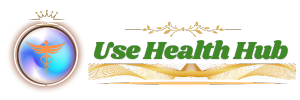1. Introduction to Sleep Disorders
Sleep disorders encompass a wide range of conditions that affect sleep quality and quantity, impacting overall health and well-being.
2. Common Types of Sleep Disorders
Common sleep disorders include insomnia, sleep apnea, narcolepsy, restless legs syndrome (RLS), and parasomnias such as sleepwalking and night terrors.
3. Insomnia
Insomnia is characterized by difficulty falling asleep, staying asleep, or experiencing non-restorative sleep despite adequate opportunity for sleep.
4. Sleep Apnea
Sleep apnea involves interruptions in breathing during sleep, leading to fragmented sleep, daytime sleepiness, and potentially serious health consequences.
5. Narcolepsy
Narcolepsy is a neurological disorder characterized by excessive daytime sleepiness, sudden loss of muscle tone (cataplexy), and hallucinations upon falling asleep or waking up.
6. Restless Legs Syndrome (RLS)
RLS causes an irresistible urge to move the legs, often accompanied by uncomfortable sensations such as tingling or crawling sensations, especially at night.
7. Parasomnias
Parasomnias are abnormal behaviors or movements that occur during sleep, including sleepwalking, sleep talking, night terrors, and REM sleep behavior disorder.
8. Circadian Rhythm Disorders
Circadian rhythm disorders involve disruptions in the body’s internal clock, leading to difficulties with sleep timing and quality, such as shift work sleep disorder and jet lag.
9. Sleep-Related Movement Disorders
Sleep-related movement disorders, such as periodic limb movement disorder (PLMD) and restless legs syndrome, involve involuntary movements during sleep that disrupt sleep continuity.
10. Excessive Daytime Sleepiness
Excessive daytime sleepiness is a symptom commonly associated with sleep disorders such as sleep apnea, narcolepsy, and insufficient sleep syndrome.
11. Sleep-Related Breathing Disorders
Sleep-related breathing disorders include sleep apnea and other conditions characterized by abnormal breathing patterns during sleep, leading to oxygen desaturation and sleep fragmentation.
12. Disorders of Arousal
Disorders of arousal, such as sleepwalking and sleep terrors, involve partial awakenings from non-REM sleep stages, leading to confusion and disorientation.
13. Sleep-Related Movement Disorders
Sleep-related movement disorders encompass conditions such as restless legs syndrome (RLS) and periodic limb movement disorder (PLMD), involving involuntary movements that disrupt sleep.
14. Sleep-Wake Transition Disorders
Sleep-wake transition disorders, such as confusional arousals and sleep drunkenness, involve abnormal behaviors or confusion upon awakening from sleep or transitioning between sleep stages.
15. Isolated Symptoms
Isolated symptoms, such as nightmares or bruxism (teeth grinding), may occur in the absence of a primary sleep disorder but can still disrupt sleep and impact overall well-being.
16. Idiopathic Hypersomnia
Idiopathic hypersomnia is characterized by excessive daytime sleepiness despite adequate nocturnal sleep, often leading to difficulty waking up and functioning during the day.
17. Rapid Eye Movement (REM) Sleep Behavior Disorder
REM sleep behavior disorder involves acting out dreams during REM sleep, potentially leading to injuries to oneself or bed partner.
18. Non-24-Hour Sleep-Wake Disorder
Non-24-hour sleep-wake disorder is a circadian rhythm disorder characterized by a mismatch between the internal body clock and the external light-dark cycle, leading to difficulties with sleep timing and maintenance.
19. Sleep-Related Movement Disorders
Sleep-related movement disorders involve abnormal movements or behaviors during sleep, including periodic limb movement disorder (PLMD) and restless legs syndrome (RLS).
20. Central Disorders of Hypersomnolence
Central disorders of hypersomnolence, such as narcolepsy and idiopathic hypersomnia, involve excessive daytime sleepiness despite adequate nighttime sleep, often leading to difficulties with wakefulness and alertness during the day.
21. Sleep-Related Eating Disorders
Sleep-related eating disorders involve abnormal eating behaviors during sleep, such as sleepwalking to the kitchen and consuming food without awareness or memory of the event.
22. Exploding Head Syndrome
Exploding head syndrome is a parasomnia characterized by loud noises or sensations resembling explosions or electrical discharges during sleep onset or awakening.
23. Nightmare Disorder
Nightmare disorder involves recurrent, disturbing dreams that cause significant distress or impairment in daily functioning, often leading to difficulty falling back asleep and daytime fatigue.
24. Sleep-Related Bruxism
Sleep-related bruxism is a sleep-related movement disorder characterized by grinding or clenching of the teeth during sleep, leading to dental problems and jaw pain.
25. Conclusion
While sleep disorders encompass a wide range of conditions affecting sleep, certain symptoms or phenomena, such as isolated nightmares or sleep-related eating behaviors, may occur without meeting criteria for a specific sleep disorder diagnosis.

